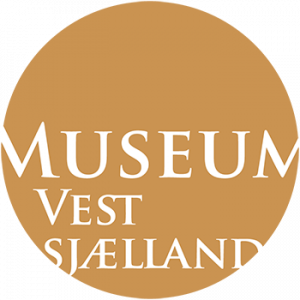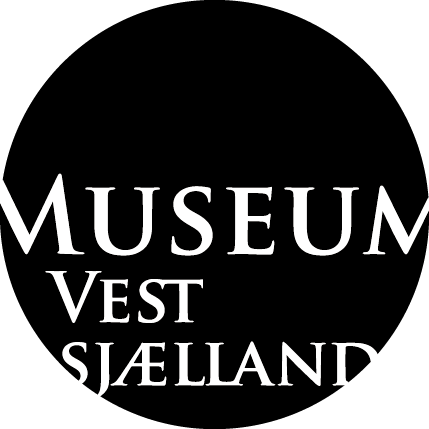Marius Pedersen's life and work
Good citizens in the burgeoning welfare state
Bakkekammen 45's residents, and the life that unfolded within the confines of the house, were, like the house itself, exemplary of the values and ideals of the National Association for Better Building Practices. Both Emma and Marius Pedersen were active in several of the many associations that were to (educate), guide and educate the Danish rural population to become good citizens in the burgeoning welfare state. Emma Pedersen was trained as a home economics teacher from Suhr's School of Economics in the late 1920s, and as such worked at both Østre Skole and at Holbæk School of Economics, where she worked from the 1930s and almost 30 years onwards. Emma Pedersen further contributed to public information by writing articles, e.g. about diabetic diet.
Marius Pedersen worked as a consultant for several government ministries and committees, and as such he was very concrete in building what we now know as the Danish welfare state. He was the Ministry of the Church's consultant for parsonages from 1922-59, he worked for the same length of time as a consultant for the State's Land Law Committee, and he was the Ministry of the Interior's consultant with social housing construction as a specialty from 1922-1945. In addition, Marius Pedersen designed a large number of public buildings such as schools and retirement homes. In this way, part of West Zealand's development was characterized by the same ideals of order and moderation in the framework of the good life, as we see in Marius Pedersen's own home at Bakkekammen 45.
Public information work and the Construction School
The high school movement was part of the large network of public education movements that marked Denmark at the beginning of the 20th century. Architect Ivar Bentsen's father Andreas Bentsen had already in 1877 established a Craftsmen's School at Vallekilde High School, where, in addition to technical knowledge, the craft students could receive a more spiritual influence and cultural formation. In 1907, Ivar Bentsen took over the management of the Craftsmen School after his father. Ivar Bentsen took the ideas from Vallekilde Højskole with him to Holbæk when in 1915 he established his own trades school: the Builder, Carpenter and Painter's School at Holbæk, or the Builder's School, as it was colloquially called. In this way, Holbæk and the surrounding area became central to the development of the Landsforeningen Bedre Byggeskik's business.
Marius Pedersen and the Construction School
Marius Pedersen was linked to the environment around the National Association for Better Construction in Holbæk from the very beginning. He was trained as a bricklayer and after attending several technical schools, he worked as a conductor when he was a student at Vallekilde Handicraft School in the years 1911-1913. Here he met Ivar Bentsen, and they soon came to work together; in 1917 they became partners. Shortly after the establishment of the Construction School, Marius Pedersen became part of the school's management, and in 1921 he became principal of the school, after Ivar Bentsen moved his work to the Academy of Fine Arts' School of Architecture in Copenhagen. Marius Pedersen was the headmaster of the Construction School until 1940 and as such became decisively important for the school's ideas and development.
The construction school and the National Association for Better Building Practices
The builders' school in Holbæk came to function in parallel with the Landsforeningen Bedre Byggeskik's course activities. Both educations rested on the same ideological material from, among other things, PV Jensen-Klint's book, which was precisely called Bygmesterskolen (1911), and in the first short 15 years there was a certain coincidence of people in the leading positions. Marius Pedersen was a member of the board of the Landsforeningen Bedre Byggeskik in the years 1921-1929. Gradually, an architectural and cultural environment unfolded around the School of Architects in accordance with the association's ideals.
The construction school started in rented premises in a private residential building at what is now Bakkekammen 50, and during the 1920s and 1930s the actual complex with main building and residences was built - designed by Marius Pedersen. The entire neighborhood around the school was characterized by the thoughts of the National Association for Better Building Practices. Several of the teachers built their own homes in the neighborhood designed by Marius Pedersen and Ivar Bentsen. Both teachers and students took part in excursions and fun evenings with readings and lectures, the division between working life and leisure life was not sharp - it was
From home to museum
After her husband's death, Emma Pedersen took care of the house and Marius Pedersen's legacy by changing nothing in the interior and appearance of the house. The building was listed in 2006, and it was agreed with Emma Pedersen that Holbæk Museum could set up a museum in the house after her death.
On 12 September 2009, Holbæk Museum opened the doors to Denmark's first museum and knowledge center for the Better Byggeskik movement in the building at Bakkekammen 45, supported by the Nordea Foundation.
Realdania financed concept development and architectural review of the building. A generous distribution from the Nordea Foundation of DKK 5 million. kroner financed the actual project of buying the building and setting up a museum and knowledge centre. The operation of the house is supported by Holbæk Municipality.
The house and garden have since been carefully registered and renovated, and the home now appears largely as it did when it was built. The house is Denmark's only interior museum dealing with the Landsforeningen Bedre Byggeskik, and is now part of Holbæk Museum's building history collection.
The museum's people have endeavored to keep the home as intact as possible precisely to maintain the very special experience of "visiting" a genuine Better Construction home. As part of the transformation from home to museum, more than 2000 objects have been registered with a museum number – everything from furniture to trinkets. In connection with the project, documentation material has also been collected in the form of interviews, photos, etc. concerning both Bakkekammen 45 and its residents as well as general information about the National Association for Better Construction.
The married couple Pedersen's home on Bakkekammen will continue to form the cornerstone of the museum's research and dissemination work regarding the National Association for Better Construction.

